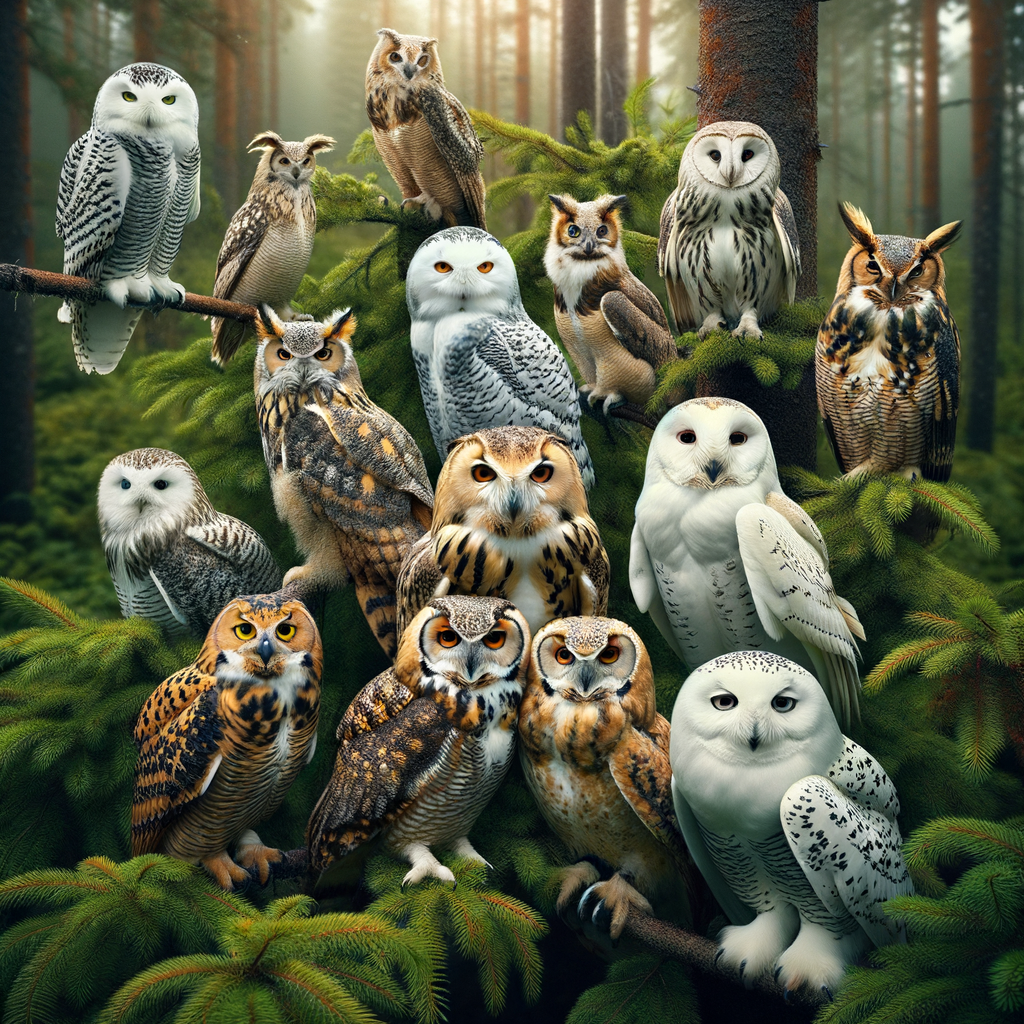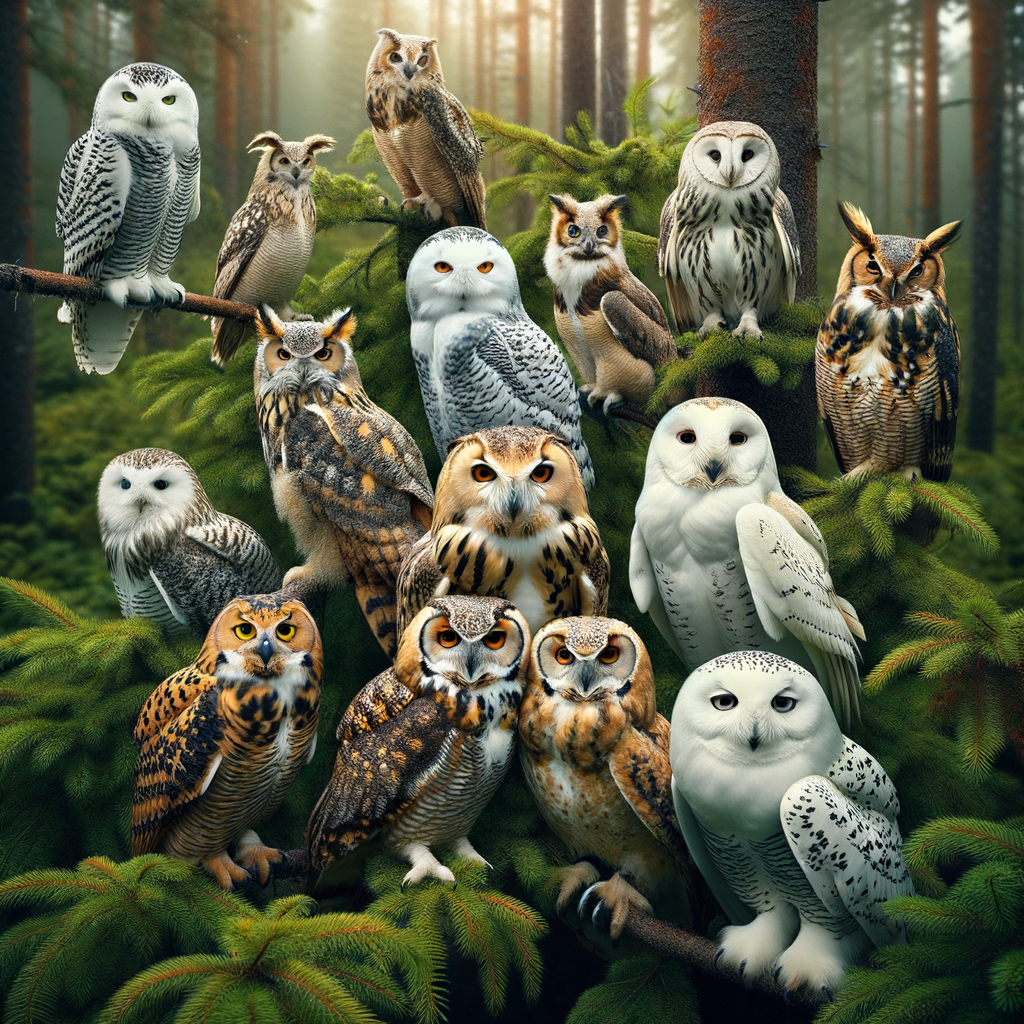
Introduction to Owls and Biodiversity
- Overview of Owls: Owls are fascinating birds known for their distinctive hoots and nocturnal habits. They have large eyes and a flat face, which help them see in the dark. Owls are found all over the world, from forests to deserts.
- Importance of Biodiversity: Biodiversity means having many different kinds of plants and animals in an area. It is important because it helps keep ecosystems healthy. Each species, no matter how small, plays a role in the environment.
- Connection between Owls and Biodiversity: Owls play a key role in maintaining biodiversity. They help control the population of small animals like mice and insects. This balance is crucial for the health of ecosystems. Without owls, some species might become too numerous and harm the environment.
Owl Habitat Preservation
Importance of Owl Habitat
- Role of habitat in owl survival: Owls need specific habitats to live and hunt. Forests, grasslands, and wetlands are common homes for owls. These areas provide food, shelter, and nesting sites. Without these habitats, owls cannot survive.
- Impact of habitat loss on owls: When habitats are destroyed, owls lose their homes. Deforestation, urbanization, and pollution are major threats. For example, the Spotted Owl population has decreased due to logging in old-growth forests. Habitat loss can lead to fewer owls and even extinction.
Conservation Efforts for Owl Habitats
- Local conservation effortsMany towns and cities have special programs to save these birds. For example, some places set up protected areas where owls can live safely. They also plant trees and bushes that owls need for nesting.
In some areas, people build owl boxes. These are like birdhouses but made just for owls. They give owls a safe place to live and raise their young.
Local schools and groups often teach kids about owls and why they are important. This helps everyone understand how to take care of these amazing birds.
- Global conservation initiativesMany countries work together to help owls. Organizations like the World Wide Fund for Nature (WWF) and International Union for Conservation of Nature (IUCN) lead global efforts to save owl habitats.
These groups create plans to protect forests and other places where owls live. They also help countries make laws to stop cutting down trees and destroying habitats.
One example is the Global Owl Project. This project studies owls all over the world. They share their findings with scientists and governments to help make better decisions for owl conservation.
By working together, we can make sure that owls have safe places to live, no matter where they are in the world.
Role of Owls in Ecosystems
Owls as Predators
Owls play a crucial role in ecosystems as predators. They help keep the balance by controlling the populations of various prey species.
- Prey species of owls: Owls hunt a variety of animals. Their diet includes small mammals like mice, rats, and voles. They also eat insects, birds, and even fish. This diverse diet helps them adapt to different environments.
- Impact of owls on prey populations: By preying on these animals, owls help control their numbers. This is important because too many small mammals can damage crops and spread diseases. Owls help keep these populations in check, which benefits the whole ecosystem.
For example, a study showed that barn owls can eat up to 1,000 mice in a year. This helps farmers by reducing the number of pests in their fields. Learn more about barn owls on Wikipedia.
| Prey Species | Impact on Ecosystem |
|---|---|
| Mice | Control pest populations |
| Insects | Reduce crop damage |
| Birds | Maintain bird population balance |
Owls and Ecological Balance
- Role of owls in maintaining balance:
They are top predators, which means they help control the populations of small animals like rodents and insects. By hunting these creatures, owls prevent them from becoming too numerous and damaging crops or spreading diseases. For example, a single barn owl can eat up to 1,000 mice in a year, which helps farmers protect their fields. - Impact of owl population changes on ecosystems:
If there are fewer owls, the animals they hunt can grow in number quickly. This can lead to problems like overgrazing, which harms plants and other animals that rely on those plants for food and shelter. On the other hand, if owl numbers increase too much, their prey might become too scarce. This balance is delicate, and keeping owl populations stable is important for the health of the whole ecosystem.
Owl Species Diversity
Overview of Owl Species
Owls are fascinating birds known for their unique features and behaviors. There are many different species of owls, each with its own characteristics. Let’s explore some common and endangered owl species.
-
Common owl species:
- Barn Owl (Tyto alba): Known for its heart-shaped face and white feathers, the Barn Owl is found almost everywhere in the world.
- Great Horned Owl (Bubo virginianus): This large owl has distinctive ear tufts and a deep hooting call. It is common in North and South America.
- Snowy Owl (Bubo scandiacus): Famous for its white feathers, the Snowy Owl lives in the Arctic regions and is known for its striking appearance.
-
Endangered owl species:
- Spotted Owl (Strix occidentalis): Found in North America, this owl is threatened by habitat loss and competition with the Barred Owl.
- Blakiston’s Fish Owl (Bubo blakistoni): One of the largest owl species, it lives in Russia and Japan. It is endangered due to habitat destruction and pollution.
- Forest Owlet (Heteroglaux blewitti): This small owl from India was once thought to be extinct but was rediscovered in 1997. It remains critically endangered.
| Owl Species | Habitat | Status |
|---|---|---|
| Barn Owl | Worldwide | Common |
| Great Horned Owl | North and South America | Common |
| Snowy Owl | Arctic Regions | Common |
| Spotted Owl | North America | Endangered |
| Blakiston’s Fish Owl | Russia, Japan | Endangered |
| Forest Owlet | India | Critically Endangered |
Impact of Species Diversity on Ecosystems
-
Benefits of Species Diversity
Means having many different kinds of animals and plants in one place. This is very important for ecosystems. When there are many species, ecosystems are healthier and stronger.
For example, different species of owls help control the population of small animals like mice. This keeps the balance in nature. Also, diverse species can help each other. Some plants need certain animals to spread their seeds. Without these animals, the plants might not grow well.
Studies show that areas with high species diversity are better at fighting off diseases and pests. They can also recover faster from natural disasters like fires or floods. This is because different species play different roles in the ecosystem.
Benefit Example Population Control Owls eat mice, keeping their numbers in check. Seed Dispersal Birds spread seeds, helping plants grow. Disease Resistance Diverse plants and animals can resist diseases better. -
Threats to Owl Species Diversity
One big threat is habitat loss. When forests are cut down, owls lose their homes. This makes it hard for them to find food and raise their young.
Another threat is pollution. Chemicals in the air, water, and soil can harm owls. For example, pesticides used on farms can poison the small animals that owls eat. This can make the owls sick or even kill them.
Climate change is also a problem. Changes in temperature and weather can affect where owls can live. Some species may not be able to survive in their usual habitats anymore.
According to Wikipedia, many owl species are now endangered because of these threats. Protecting their habitats and reducing pollution are key steps to help them.
Owl Conservation Efforts
Local Owl Conservation
- Community-based conservation efforts: Many communities come together to help protect owls. They create safe habitats and educate people about the importance of owls. For example, some towns set up special nesting boxes to give owls a safe place to live.
- Success stories of local conservation: In some areas, local efforts have really paid off. In one town, volunteers planted trees and cleaned up forests. As a result, the owl population grew by 20% in just two years. These success stories show how powerful local action can be.
Global Owl Conservation
-
International Conservation Organizations
Many organizations work to protect owls around the world. These groups help by studying owls, protecting their habitats, and educating people. Some well-known organizations include:
- BirdLife International: This group works in over 100 countries to protect birds, including owls. They use science to find the best ways to help.
- World Wildlife Fund (WWF): WWF helps protect many animals, including owls. They work to save forests and other places where owls live.
- International Owl Center: This center focuses on owl education and conservation. They teach people about owls and how to help them.
-
Global Conservation Strategies for Owls
There are many ways to help owls around the world. Some strategies include:
- Protecting Habitats: Keeping forests, grasslands, and other places safe helps owls. This means stopping deforestation and pollution.
- Research and Monitoring: Scientists study owls to learn more about them. They track owl populations and find out what they need to survive.
- Education and Awareness: Teaching people about owls helps them understand why these birds are important. Schools, museums, and online resources can all help.
- Legislation and Policies: Governments can make laws to protect owls. These laws can stop hunting and protect owl habitats.
Here is a table with some key information:
Strategy Description Protecting Habitats Keeping natural areas safe from harm. Research and Monitoring Studying owls to learn about their needs. Education and Awareness Teaching people about the importance of owls. Legislation and Policies Creating laws to protect owls and their homes.
Conclusion: Owls as Guardians of Biodiversity
- Summary of owls’ role in biodiversity: Owls play a crucial role in maintaining the balance of ecosystems. They help control the population of small mammals and insects, which can prevent overpopulation and the spread of diseases. By doing so, owls contribute to the health and stability of various habitats.
- Importance of continued conservation efforts: Protecting owls is essential for preserving biodiversity. Conservation efforts, such as habitat preservation and anti-poaching measures, ensure that owl populations remain stable. This, in turn, supports the broader ecosystem. Continued efforts are needed to address threats like habitat loss and climate change.
Owls are vital guardians of biodiversity. Their presence helps keep ecosystems balanced and healthy. By supporting conservation efforts, we can ensure that these magnificent birds continue to thrive and play their essential role in nature.






